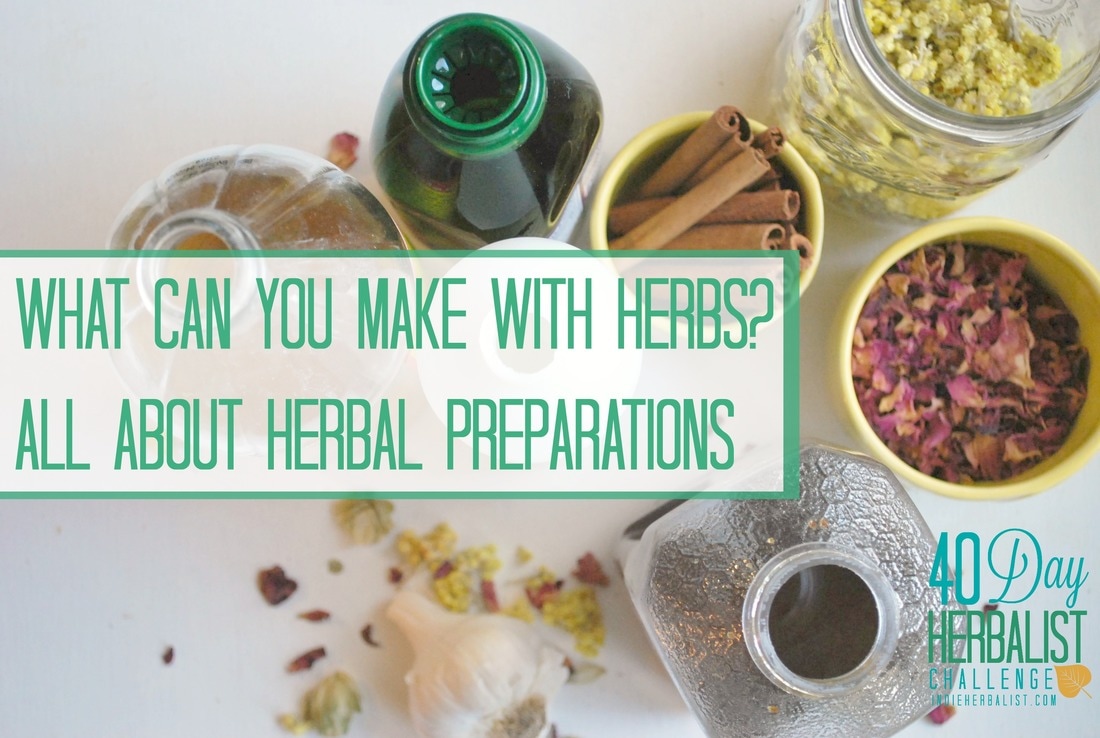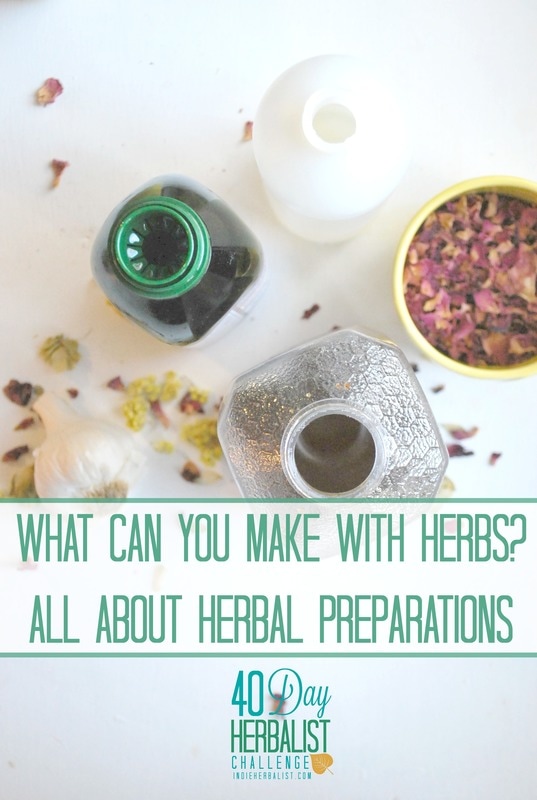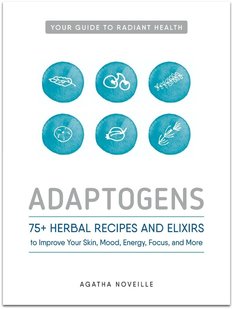Links contained in this post and elsewhere on my website may include affiliate links. When you make a purchase through these links, I earn a commission at no additional cost to you. I only link to products and services that I love - and that I think you will love, too!
Day 9 of the 40 Day Herbalist Challenge
How have you used herbs? As a tea or an extract? In tablet or capsule form? There are many creative (and delicious) ways to use herbs that go far beyond these everyday herbal staples. In today’s Challenge, we will look at some of the more creative ways to prepare herbs for use in your everyday wellness routines.
Time needed: 15-20 minutes
Tools needed: pens/pencils, notebook
Chances are, you’ve heard of or sampled at least a few of these old standbys. They are very basic, and get the job done with simplicity and ease.
Infusion
To make an infusion, dried or fresh herbs are added to hot water (just off the boil) and allowed to steep. Usually allowed to steep 5-10 minutes. Infusions are usually made with leaves and flowers.
Decoction
Dried or fresh roots, barks, and seeds are better prepared as a decoction than as an infusion, but the principle is the same – using water to extract the good stuff. Herbs are added to cold water in a saucepan with lid and allowed to soak for an hour or so to soften. Then they are brought up to the boiling point and are allowed to simmer for 15-20 minutes. Some herbalists measure before and after and add any water that has evaporated in the process.
Overnight Steep
Aka super infusion or nourishing infusion. A standard infusion is prepared, but allowed to steep in a covered container overnight in the refrigerator. Usually this practice is reserved for nutritive herbs like nettles, oatstraw, or raspberry leaf.
Extract
Sometimes extracts are referred to as a tincture, although in the United States “extract” is a more neutral term. Fresh or dried herbs are soaked in vodka, Everclear, or clear grape alcohol for 2-6 weeks and the jar is shaken every day in order to assist the extracting process. This soaking is called “maceration” in formal herb-speak. Some herbalists use brandy.
Branching Out
Those might be the most common ways to prepare herbs, but that doesn’t mean they are the only ways. Here’s a quick rundown of some other options. We take a peek at other Herb + Alcohol options in the first entry, but beyond that all of these preparation can be made without it. So if you are avoiding alcohol for any reason, you have plenty of options from which to choose!
Herbs + Alcohol
Beyond using brandy or vodka to make an extract, other varieties of alcohol can be used to make different types of preparations. Rum, gin, and whisky can all be used – but remember that any flavoring already in your alcohol is taking up space and will affect the ability of the alcohol to soak up any more herbal goodness. Adding honey to your extract in a 1:1 ratio will give you an elixir. Although extracts and elixirs are made to be used in smaller quantities (a few teaspoons or ml over the course of a day), a cordial is made more dilute, with 1 oz serving sizes in mind. Both elixirs and cordials can include other spices and ingredients like dried fruit for flavoring. You can also make infused wines – like cordials, they are usually more dilute with a larger serving size in mind than your typical extract.
Herbs + Vinegar
Vinegar is especially good at extracting minerals and a class of compounds known as alkaloids. Depending on the amount of herbs relative to the amount of vinegar, you can either make a vinegar extract or a milder infused vinegar.
Herbs + Glycerin
Although not as effective as alcohol at extracting the useful properties of herbs, glycerin extracts can be very useful for the home herbalist wishing to avoid alcohol. Without getting into all of the technical aspects, glycerin is a clear-ish liquid that has a thick, syrupy consistency. It tastes sweet, but doesn’t impact blood sugar. Glycerin is used in soap and cosmetics, too – so be sure your glycerin is food grade. Glycerin can also be mixed with enough powdered herbs to create a dough and then rolled into small balls, which is called an electuary.
Herbs + Honey
Honey can be used to make an electuary, too. Combining an infusion or decoction and honey can make a syrup, but it’s important to note that the syrup will need to be refrigerated unless you also add at least 20% alcohol for preservation.
Herbs + Sugar
Sugar is not supremely healthful in any form, but it can have a useful place in your herbal recipe book. Herbal syrups can be made with sugar or with honey, so if you are vegan and don’t want to use honey for your syrups, no problem. Also, if you want to make soothing herbal candies to keep on hand for times you are recovering from coughs, colds, and sore throats – sugar is your friend. Honey is a humectant that attracts moisture from the air, so hard candy made with it won’t stay hard for very long.
Herbs + Honey + Vinegar
A peculiar concoction that you may or may not be familiar with is a mixture of herbs, honey, and vinegar known as an oxymel. Oxymels can be eaten right off the spoon (they have a more or less syrupy consistency, depending on ratios used) or diluted into water and enjoyed as a beverage.
Herbs + Oils
Herbs can be infused into cooking oils like olive, sesame, and sunflower by using gentle heat, or finely powdered dried herbs and spices can be mixed in to create flavorful oils that can dress up salads, grains, or meats. An important note on oils here: an infused herbal oil and an essential oil (a distilled and extremely concentrated form) aren’t the same thing. Essential oils shouldn’t be used internally.
Herbs + Goodies
Powdered herbs can be combined with nut and seed butters and other ingredients to create little herbal truffles, granola bites, or superfood balls. Yum! A serving of powdered herbs can also be added to yogurt, chia pudding, smoothies, or similar creations, which can easily carry and disguise the flavor of most herbs. Granted, sometimes tasting your herbs is important (such as with bitters) but for times when you just aren’t up for it, playing with your food is ok. Herbal infusions and extracts also go well in homemade gelatin gummy treats, and powders are easy to add to fruit leather.
Your Mission
Olive oil
Apple cider vinegar
Honey or maple syrup
Vodka, brandy, or everclear
All the best,
Agatha


